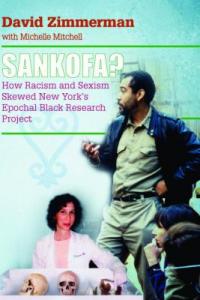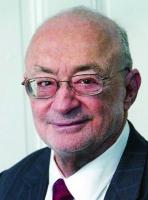David Zimmerman: Sankofa?
SANKOFA?
HOW RACISM AND SEXISM SKEWED NEW YORK'S
EPOCHAL BLACK RESEARCH PROJECT
David Zimmerman
Self-published, October 2013, $15.95; ebook, $5.99
ISBN: 978-1-477568-35-4 Zimmerman reports:
When a cemetery for black slaves was unearthed in the heart of New York City in the early 1990s, some 400 sets of human remains were disinterred. The finding opened a window on a little publicized fact of colonial American life, the enslavement in the North of blacks transported from Africa.
Over local researchers’ objections, the bones were shipped for study to anthropologist Michael L. Blakey, PhD, at Howard University. Blakely planned, he said, to learn all he could about the slaves to link them to populations in Africa, which he also intended to study.
From the start, Blakey solicited the support of the Black “Descendent Community.” He promised its members that they and their forebears would be honored by what he could glean scientifically from the moldered bones. In the end, he discovered very little, and his misjudgments ran the research off the track.
A Sankofa, as in my title, is a design of nails hammered into one deceased slave's coffin.
Blakey interpreted it as a West African mourning symbol. That design also has been found on the coffin of a white colonist from Connecticut, however, so it likely did not come from Africa.Blakey hired, and then fired, a highly trained and experienced bone specialist, a southern white woman, Mary Cassandra Hill, MA. He accused Hill of stealing his project, which she forcefully denied, and forbade her to publish her data.
When Blakey turned in his preliminary report, it was rejected by the federal government, which had provided millions of dollars to fund the research. Blakey then bad-mouthed the feds in comments that appeared in The Washington Post. Howard University dismissed him as the project’s scientific director.
As a New Yorker, I was intrigued by the initial reports on the cemetery. I tried to find out what the research had shown. Blakey refused my interview requests. When I couldn’t get answers, I knew there was a story here. I talked to other scientists and government officials, and reviewed numerous documents to lay bare this fiasco.
In the end, Blakey published his work as a government report, not as science, as consultants had urged him to do. So far, neither he nor anyone else has produced a narrative description of what he did and did not find, in words that descendants of those in the cemetery and others might readily understand. Were the data so poor? Was Blakey incapable? Had he been leading the community on? Was this enormous research effort a scam? SANKOFA? will help readers answer these questions.
Contact info:
- David Zimmerman, 802-626-9750, tallsam@charter.net
- Publicist: Jennifer Prost, 973-746-8723, jprostpr@comcast.net
- Book website: www.sankofa-book.com
NASW members: Will your book be published soon?
See https://www.nasw.org/advance-copy-submission-guidelines.
Send info and images to Lynne Lamberg, NASW book editor, llamberg@nasw.org.



